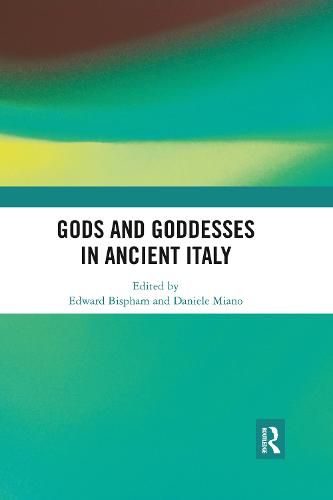Readings Newsletter
Become a Readings Member to make your shopping experience even easier.
Sign in or sign up for free!
You’re not far away from qualifying for FREE standard shipping within Australia
You’ve qualified for FREE standard shipping within Australia
The cart is loading…






This collection explores the multifaceted nature of the gods and goddesses worshipped in ancient Italy. It examines Italic, Etruscan, and Latin deities in context and in the material remains, and also in the Greco-Roman written record and later scholarship which drew on these texts.
Many deities were worshipped in ancient Italy by different individuals and communities, using different languages, at different sanctuaries, and for very different reasons. This multiplicity creates challenges for modern historians of antiquity at different levels. How do we cope with it? Can we reduce it to the conceptual unity necessary to provide a meaningful historical interpretation? To what extent can deities named in different languages be considered the equivalent of one another (e.g. Artemis and Diana)? How can we interpret the visual representations of deities that are not accompanied by written text? Can we reconstruct what these deities meant to their local worshippers although the overwhelming majority of our sources were written by Romans and Greeks? The contributors of this book, a group of ten scholars from the UK, Italy, France, and Poland, offer different perspectives on these problems, each concentrating on a particular god or goddess.
Gods and Goddesses in Ancient Italy offers an invaluable resource for anyone working on ancient Roman and Italian religion.
$9.00 standard shipping within Australia
FREE standard shipping within Australia for orders over $100.00
Express & International shipping calculated at checkout
Stock availability can be subject to change without notice. We recommend calling the shop or contacting our online team to check availability of low stock items. Please see our Shopping Online page for more details.
This collection explores the multifaceted nature of the gods and goddesses worshipped in ancient Italy. It examines Italic, Etruscan, and Latin deities in context and in the material remains, and also in the Greco-Roman written record and later scholarship which drew on these texts.
Many deities were worshipped in ancient Italy by different individuals and communities, using different languages, at different sanctuaries, and for very different reasons. This multiplicity creates challenges for modern historians of antiquity at different levels. How do we cope with it? Can we reduce it to the conceptual unity necessary to provide a meaningful historical interpretation? To what extent can deities named in different languages be considered the equivalent of one another (e.g. Artemis and Diana)? How can we interpret the visual representations of deities that are not accompanied by written text? Can we reconstruct what these deities meant to their local worshippers although the overwhelming majority of our sources were written by Romans and Greeks? The contributors of this book, a group of ten scholars from the UK, Italy, France, and Poland, offer different perspectives on these problems, each concentrating on a particular god or goddess.
Gods and Goddesses in Ancient Italy offers an invaluable resource for anyone working on ancient Roman and Italian religion.